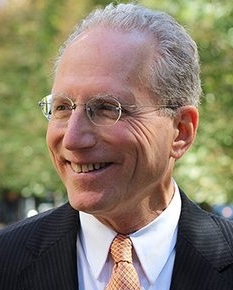Can Biomanufacturing Support U.S. Cities?

By Louis Garguilo, Chief Editor, Outsourced Pharma

“Where should we establish our biopharma manufacturing operations? Where should our CDMOs be located?”
Answering these questions of geography has never been more important.
Basic factors have always included: available space in which to locate or build; costs of establishing and doing business; availability of skilled workforce; transportation (roads, airports).
But the list has increased – and grown more complicated. For example: “What did we learn from the COVID-19 pandemic?” may be a question adding perspective.

These complications lead to a logical next question, articulated in editorials such as: But Where In The U.S.? Puerto Rico In The Reshoring Race.
We’ve taken note of new CDMO creation in “the heartland” (U.S. Manufacturing On The Rise: Add Another CDMO To The Heartland), and individual states: Pennsylvania (The Biggest CDMO Show On Earth), North Carolina (CDMOs Cluster In North Carolina: Why It Matters To You), and New Jersey (New Jersey Solutions For Cell And Gene Development and Manufacturing.)
This is driven predominantly by the burgeoning cell-and-gene (and other advanced) therapy developers (including Big Pharma). These companies desire to:
- remain close to their university origins
- be nearer their “supply chains,” with the patient more a part of that continuum than ever before
- partner directly with hospitals and other caregivers
All this leads us to cities. Bigger cities – with the highest concentration of academia, hospitals and patients, and skilled labor.
But are these cities in the U.S. amenable to biopharma operations? Are they great places to live and work?
I have some doubts.
In a recent discussion, Joseph Fetterman, Executive Vice President, Colliers Life Sciences, tried to disabuse me of them. And he has the blueprint to demonstrate his optimism.
U.S. Cities Not Ideal
I was always a big-city fan. NYC had been a favorite.
I ended up living in a big city outside the U.S. – Osaka, Japan. Big cities in Japan work. Really well. They’re safe, vibrant but orderly; have great public transportation; skilled workforces.
Although I’m certain readers can list their favorite exceptions, too many major cities in the U.S. are now catalogues of volatile social climates, pockets of rising crime and murder rates, and see permanent poverty, homelessness and other woes.
Unless changes are made, many cities in this country may continue looking back on more halcyon days.
Fetterman, not assigning any of these challenges particularly to his city, but accepting the premise of my concern, is devoted to make some of those changes.
About 2.5 million square feet of change. In the heart of Philadelphia.
It comes in a major redevelopment of a former steelworks campus into an advanced biomanufacturing hub, which we detailed in part one.
CEO In The City
I know from some time spent working in state economic development aimed at the biopharma industry, no company locates to a city where the CEO is not fully comfortable.
The chief executive takes seriously, on behalf of current and future employees: crime, inner-city decay, violent political or cultural clashes in the streets.
Today, I hear biopharma executives say they’re opting for safe and stable (as well as vibrant) – where employees and their families want to work and live, and location is a positive for worker recruitment.
Fetterman – again without assigning any of the challenges above specifically to Philadelphia – deserves credit for taking this up with me.
“Look,” he says calmly, “cities are complex - generalizations rarely apply.” He says the biomanufacturing campus his client (Plymouth Group) is creating is “the right fit for the entire Philadelphia area – and the biopharma industry.”
“I think about what can be gained for employees when it comes to cities,” he continues. “Culture, dining, resources, community, and diversity to name a few.
“Safety and poverty can be challenging realities for those pockets you mention, but understanding how these conditions came to be helps create a culture of change.”
Fetterman believes the leadership in the city of Philadelphia recognizes the opportunity at hand.
“Finally, here is a way to extend the impact of the life-sciences expansion in Philadelphia to those outside of academic centers.
“The quickest way to address the challenges you raise is to create a community by bringing opportunity through technical training, career paths, well-paying jobs, and an ecosystem of innovation and productivity.”
He continues: “The CEOs of these biopharma companies are smart. They know the intrinsic values of urban centers you discussed – labor, patient population, academic research. Investing in the business of producing life-changing therapies – seeing the value in applying that purpose through the lens of economic development and D&I [diversity and inclusion] can be a tipping point.”
Fetterman then mentions a different business approach.
“We watched when the Amazon HQ 2 project went around. Every city and their cousin pushed all their chips into the center of the table, as if they all were actually totally qualified to win. I get it, that's their job,” he says.
“Philadelphia competed as well, but I’ll make this observation: if Philadelphia had won, the pace of job creation would have been like a rogue wave overtaking a boat out on the ocean: too much too fast.
In contrast, he says, his biomanufacturing campus “meshes with what is happening throughout the Philadelphia region in life sciences.”
“It’s an opportunity to move forward incrementally, but have a more dramatic result than the impact HQ2 would have had, offering better paying jobs and long-term career opportunities.
“It’s Philadelphia putting our strongest suit forward.”
Train And They Will Work
As mentioned above, in part one we described the impressive scale of the Budd Bioworks campus for advanced biomanufacturing, and how it transforms a dormant industrial campus in the heart of a community that once grew up around those now lost jobs.
But can that community now produce the workers to bring it to life?
“There are plenty of biomanufacturing and related jobs that can be trained for,” says Fetterman.
“That's an exciting component of this project –creating training opportunities to grow the talent t needed for those CEOs and the companies that will locate here. I couldn't agree with you more – ultimately that CEO has to make a decision that will work in the long run. I think we've got a really attractive option that can check a lot of boxes.”
Cities like Boston and San Diego have proven how successful larger metropolitan areas in the U.S. can be. And Philadelphia has traditionally as much pharma, and now cell-and-gene activity, in and around it as any city in the world.
Is it time to consider how biopharma and our supply chain partners can reach further into the depths of U.S. cities?
First, we’ll need to have these real discussions.
